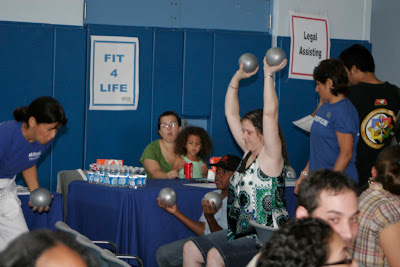
Soccer enthusiast, editor tries out for soccer team
By Igor Mello
Editor-in-Chief
I’m still waiting for my phone call. Whenever my phone rings I jump, only to be consistently let down by my mother or anybody with less relevance calling me.
Every high school athlete that has never played in college still has that itch. They still point and shout at the TV during a game. They still dream that they have a shot at being a superstar.
I just want to keep the dream alive. I needed to scratch my itch.
That opportunity arose when the college approved the new extramural soccer team. This was my chance. It’s just a community college, how much talent can there possibly be out here?
Boy, was I wrong.
There were roughly 130 pairs of cleats clicking and clacking on the pitch on the first day of tryouts. I was merely an ant in an ant pile. The school anticipated about 400 people to tryout despite only having 18 spots available. Though the odds weren’t on my side, I thought I’d still give it a try.
Haitian soccer legend and Broward College’s head soccer coach Ernst “Nono” Jean-Baptiste had a tough job on his hands, so I made sure I got there early to meet him, that way he’d remember my face.
He explained to the players that he’s not looking for anything fancy. “I want to see how you position yourself on the field,” Jean-Baptiste said to the crowd of players before we began to fight for our soccer lives.
The only positioning I did was placing my heavy foot on top of the ball and busting my butt. The pain from the fall was unbearable, but I quickly hopped back up and continued the drills, concealing my pain. Luckily, Jean-Baptiste’s peripheral vision didn’t reach my side of the field.
After the drills, Jean-Baptiste gathered the gang around to start some scrimmages. My eyes locked with his eyes as he walked around searching for captains. It was as if my eyes told him to choose me.
Once Jean-Baptiste appointed me as captain, I felt as if I was the head coach. My leadership skills were on full display as I directed all my teammates to their positions.
“If you score a goal, the other team will give me 10 push-ups,” said Jean-Baptiste, who also added that 20 push-ups would be awarded to the opposing team if we completed 10 consecutive passes.
 The scrimmage only lasted 10 minutes, but that was no excuse for me. I was still dissatisfied with my performance. On any day two assists would look great, but on a tryout night, two assists didn’t feel like it was enough.
The scrimmage only lasted 10 minutes, but that was no excuse for me. I was still dissatisfied with my performance. On any day two assists would look great, but on a tryout night, two assists didn’t feel like it was enough.Despite not getting the call, there is not an ounce of bitterness in me. I have no regrets. My performance may have not stood out among the greats, but I didn’t stink up the field. Just to know that I can hang with the big boys made me feel like I still had it. My sore, bruised body will remind me each day for the following week that I got to relive my dream of being a soccer star. I’ll probably have an itch to play again once that pain goes away, but in the meantime, my bruises will be treated as a badge of honor.








